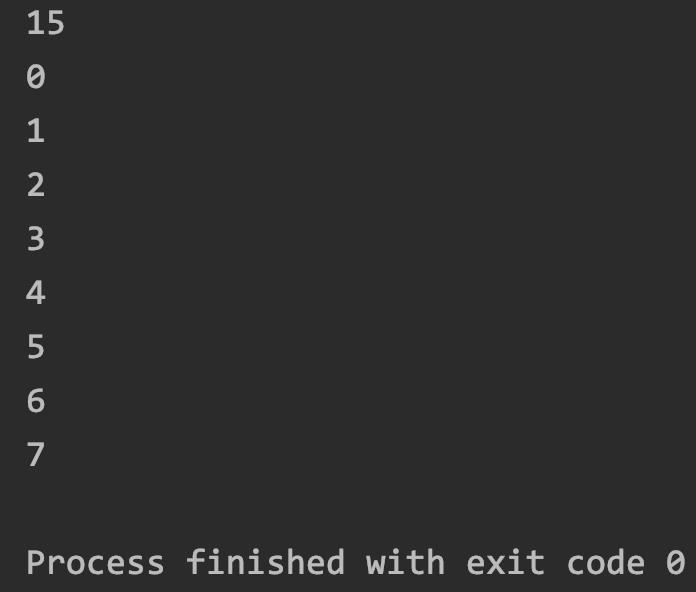HashSet理解add方法(jdk1.7及以前)是如何插值的
Posted zhangjin1120
tags:
篇首语:本文由小常识网(cha138.com)小编为大家整理,主要介绍了HashSet理解add方法(jdk1.7及以前)是如何插值的相关的知识,希望对你有一定的参考价值。
HashSet理解(一)java集合
HashSet理解(二)怎么做到值不重复
HashSet理解(三)add方法(jdk1.7及以前)是如何插值的
& (按位与)运算的结果
&运算符,具体怎么算的,这篇:java运算符手把手教你计算。按位与有个特点,算式x&y中,当y=2^n-1时,例如3,7,15等,其作用类似于x%y。测试下:
public static void main(String[] args) {
System.out.println(15&15);
System.out.println(16&15);
System.out.println(17&15);
System.out.println(18&15);
System.out.println(19&15);
System.out.println(20&15);
System.out.println(21&15);
System.out.println(22&15);
System.out.println(23&15);
}
运行结果:

indexFor()本质是求余运算
static int indexFor(int h, int length) {
return h & (length-1);
}
length初始值是16,length-1就是15。
jdk1.7及以前,插值其实是头插法
put方法具体:
public V put(K key, V value) {
if (key == null)
return putForNullKey(value);
int hash = hash(key.hashCode());
int i = indexFor(hash, table.length);
for (Entry<K,V> e = table[i]; e != null; e = e.next) {
Object k;
if (e.hash == hash && ((k = e.key) == key || key.equals(k))) {
V oldValue = e.value;
e.value = value;
e.recordAccess(this);
return oldValue;
}
}
modCount++;
addEntry(hash, key, value, i);
return null;
}
看看addEntry()方法的四个参数:
- hash是
hash(key.hashCode());的返回值,并不是key.hashCode()直接传入。- key,value都put方法的入参
- i 是hash值对应的数组下标
继续看,这四个参数怎么处理的:
void addEntry(int hash, K key, V value, int bucketIndex) {
Entry<K,V> e = table[bucketIndex];
table[bucketIndex] = new Entry<K,V>(hash, key, value, e);
if (size++ >= threshold)
resize(2 * table.length);
}
e是单链表的头结点,new Entry<K,V>(hash, key, value, e);是新的头结点,看看,Entry的构造函数里面干了啥?
static class Entry<K,V> implements Map.Entry<K,V> {
final K key;
V value;
Entry<K,V> next;//对下一个节点的引用(看到链表的内容,结合定义的Entry数组,是不是想到了哈希表的拉链法实现?!)
final int hash;//哈希值
Entry(int h, K k, V v, Entry<K,V> n) {
value = v;
next = n; //原头结点放在新头结点的尾部
key = k;
hash = h;
}
...
}
hash值,key,value直接保存在entry里面,然后让next等于原来的头结点。这就是整个完整的头插法。更多详细的源码分析,参考:HashMap源码分析.
为什么没见处理哈希冲突?
哈希冲突简单的讲,就是两个key的hash值相同。详细描述参考:数据结构与算法:hash冲突解决。
如何处理hash冲突?
- 拉链法(链地址法)
- 开放定址法
- 再hash法
HashMap处理hash冲突的方式,就是拉链法,即当hash值相同时,直接将entry插入到链表头部。
以上是关于HashSet理解add方法(jdk1.7及以前)是如何插值的的主要内容,如果未能解决你的问题,请参考以下文章
HashSet——add remove contains方法底层代码分析(hashCode equals 方法的重写)